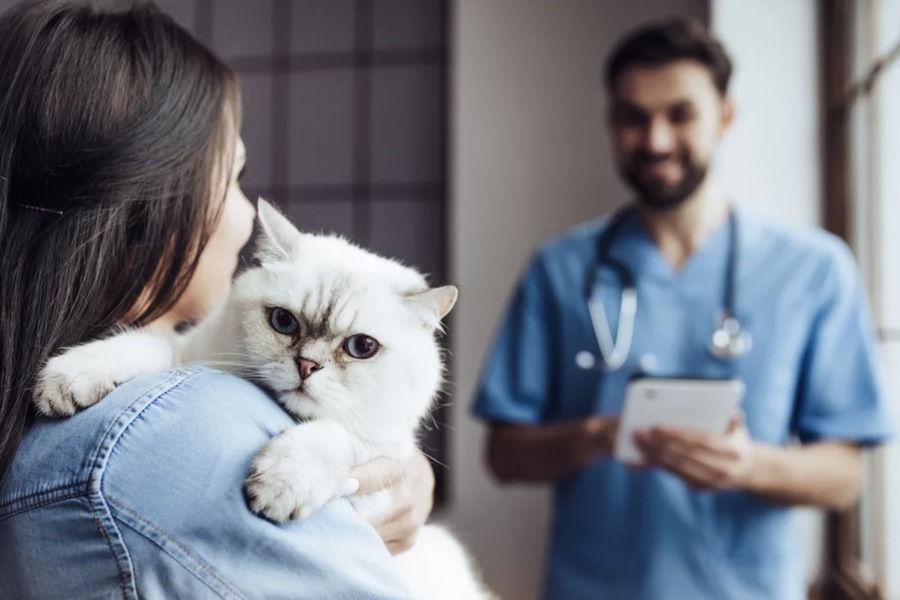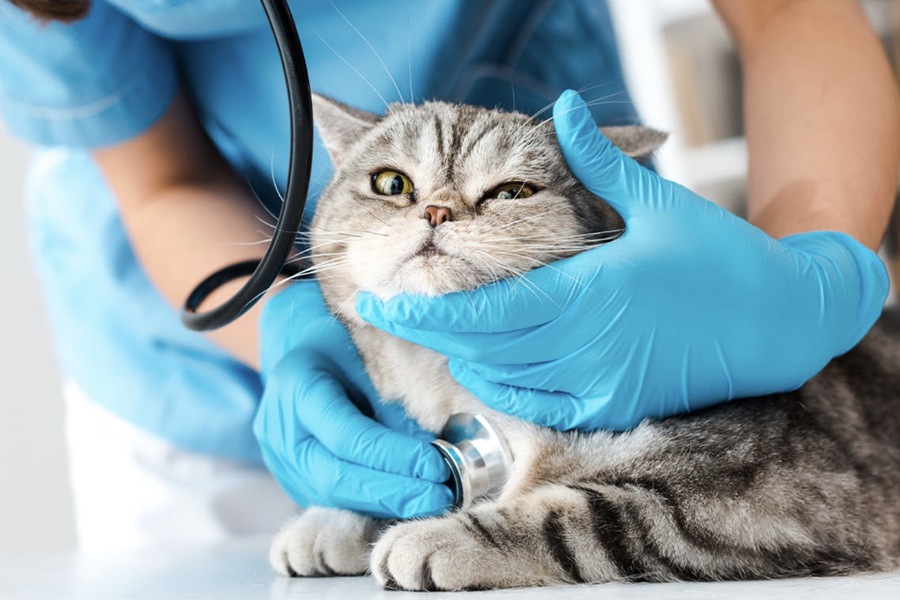Castration, or neutering, is a surgical procedure that permanently alters a male cat’s reproductive system by removing the testicles, which stops the production of sex hormones. This intervention significantly impacts the animal’s behavior, health, and quality of life. Veterinarians, including those considered the best vet in Dubai, widely recommend castration for its benefits, not only for the health of individual cats but also for broader population control. For many pet owners, understanding the nuances of castration is essential for making an informed decision that supports both the pet’s and family’s well-being.
Reasons for Castrating a Cat
1. Preventing Unwanted Litters
Castration helps reduce the number of unwanted kittens that may otherwise contribute to the problem of stray or abandoned animals. Many shelters are overwhelmed with cats that come from unplanned pregnancies, and neutering is a straightforward solution to prevent the exponential growth of the feline population. For pet owners who do not intend to breed their cats, castration is an effective way to avoid accidental litters.
2. Reduced Disease Risks
Neutered cats have a significantly lower risk of developing reproductive-related illnesses. Testicular cancers are eliminated, and conditions like prostate enlargement or infections are less likely. Additionally, sexually transmitted infections are a concern in unaltered cats, especially if they roam outdoors and interact with other animals. Castration minimizes these risks, providing a layer of protection against a range of health complications.
3. Calmer, More Predictable Behavior
Hormonal behaviors, such as aggression, territorial marking, and roaming, are all influenced by the production of testosterone. After castration, a male cat’s urge to exhibit these behaviors diminishes. This often results in a more predictable, calmer pet. Reduced hormonal drive means cats are generally less likely to roam, spray, or show aggressive behavior toward other animals or family members.

4. Reduced Risk of Cardiovascular Issues
For some cats with pre-existing heart conditions, the removal of testosterone can have beneficial effects on cardiovascular health. The hormone-driven instincts to roam and engage in aggressive encounters are stressful for a cat’s heart, especially for those with congenital or age-related cardiac issues. Castration helps reduce these instinct-driven behaviors, resulting in a less stressful lifestyle for cats prone to heart complications.
5. Management of Cryptorchidism
Cryptorchidism is a condition where one or both testicles do not descend into the scrotum, often leading to health complications. Testicles retained within the abdomen have a higher likelihood of developing tumors or causing other complications. Castration is generally recommended to reduce the risk of testicular dysfunction or cancer in these cats, making it a preventive measure as well as a treatment.
6. Tumor Prevention and Treatment
Cats are susceptible to testicular and prostate tumors, which can cause significant health issues if left untreated. Castration, particularly if done early, effectively prevents testicular tumors and can reduce the risk of prostate tumors. For cats already diagnosed with these conditions, castration may help manage or control tumor growth.
7. Managing Bleeding Disorders
For cats with hemophilia or other genetic bleeding disorders, any injury or excessive physical exertion can be life-threatening. Castration helps mitigate the behaviors, such as roaming and fighting, that put these cats at risk of injury and excessive bleeding. By reducing the likelihood of injury-prone situations, castration helps manage the complications associated with bleeding disorders.
Castration Methods
There are two main methods of castration, each with unique benefits and considerations:
1. Surgical Castration
Procedure: This is the traditional method and involves the surgical removal of the testicles. The surgery is performed under general anesthesia, ensuring the cat does not feel any pain during the operation. Surgical castration is permanent and requires a brief recovery period.
Pros: Surgical castration is a one-time, permanent procedure that effectively eliminates the production of sex hormones.
Cons: As with any surgery, there is a minor risk of complications such as infection or reaction to anesthesia.
2. Chemical Castration
Procedure: Chemical castration is a non-surgical alternative involving injections of hormonal drugs that inhibit the production of testosterone. This method provides a temporary effect and may need to be repeated periodically.
Pros: It is a non-invasive option, suitable for cats that may not tolerate surgery well.
Cons: Chemical castration is not permanent, and repeated treatments may be needed. Over time, the use of hormonal drugs may also have side effects.
Effects of Castration on a Cat’s Health and Behavior
Castration has a range of positive effects on both the physical health and the behavioral tendencies of a cat. Here’s a closer look at some of the key changes:
Reduction in Reproductive Instinct
Male cats are naturally driven to seek out mates. When castrated, this reproductive instinct diminishes, and they become less likely to roam in search of females. This not only reduces their exposure to the risks associated with outdoor roaming (such as traffic accidents and predator encounters) but also keeps them closer to home, which can lead to a stronger bond with their owners.
Decreased Marking Behavior
Male cats frequently spray or mark their territory with a strong-smelling urine to signal their presence and establish dominance. Castration reduces the urge to mark, making it easier to maintain a clean and odor-free home environment.
Reduced Aggression and Territorial Behavior
In multi-pet households or environments where cats encounter other animals, castration reduces aggressive tendencies, which can help create a more peaceful coexistence among pets. Cats with lower testosterone levels are typically more social, affectionate, and responsive to training.
Improved Long-Term Health
Castrated cats face a significantly reduced risk of certain cancers and reproductive-related conditions, which contributes to an overall healthier life.
Extended Life Expectancy
Studies indicate that castrated cats tend to live 3-5 years longer than their unaltered counterparts, largely due to decreased risks associated with hormonal-driven behaviors and illnesses.

Comprehensive Post-Operative Care for Castrated Cats
Post-operative care is crucial to a cat’s recovery after castration. By providing the necessary care and monitoring your cat’s behavior and health, you can help ensure a smooth, complication-free recovery.
- Create a Comfortable Resting Area
Arrange a quiet, comfortable space where the cat can rest and recover. Make sure the area is on the floor to avoid falls and away from any drafts or heat sources, like radiators or heaters. - Monitor Hydration
Cats may experience an increase in thirst following surgery. Make sure they have access to fresh water at all times. If your cat isn’t drinking on its own, consider using a syringe to gently give small amounts of water. - Limit Physical Activity
Prevent your cat from running or jumping, as these activities can disrupt the healing process and potentially damage the surgical wound. Keeping them in a confined space or small room for the first few days may help. - Wound and Stitch Care
If stitches were used during the procedure, follow your veterinarian’s instructions for cleaning and applying antiseptics to the wound. Avoid unnecessary handling of the area and ensure a sterile environment. - Use a Protective Collar
Cats instinctively lick and scratch at wounds, which can introduce bacteria and delay healing. A protective collar, or Elizabethan collar, will prevent your cat from disturbing the wound. Remove the collar only during feeding times. - Adjust the Litter Box Setup
Remove the litter temporarily to prevent particles from sticking to the wound. Instead, use newspaper or soft paper, and clean the litter box frequently to maintain a sanitary environment. - Avoid Bathing
Water can cause the wound to become damp, increasing the risk of infection. Postpone baths for at least two weeks after surgery. In case of urgent need, use pet-safe wipes or damp cloths to clean any dirt. - Monitor for Signs of Infection
Watch for symptoms such as swelling, redness, discharge, or an unpleasant odor around the incision site. Excessive lethargy, lack of appetite, or fever may also indicate complications. Contact your veterinarian if you observe any unusual symptoms.
Final Thoughts on Castration and Its Long-Term Benefits
Castration is more than a simple medical procedure—it’s a lifestyle change that can transform a cat’s health, behavior, and quality of life. For pet owners, castration offers peace of mind by reducing undesirable behaviors and lowering the risks of health complications. Additionally, castration plays an essential role in responsible pet ownership, helping reduce overpopulation and the strain on animal shelters.
By following proper post-operative care and continuing with regular veterinary visits, castrated cats can lead long, healthy, and happy lives as beloved members of their families. The decision to castrate is one that brings lifelong benefits for both pets and their owners, creating a more harmonious home and contributing to the well-being of the larger feline community.
Skydiver, feminist, band member, Mad Men fan and holistic designer. Acting at the crossroads of modernism and intellectual purity to craft delightful brand experiences. Let’s design a world that’s thoughtful, considered and aesthetically pleasing.
